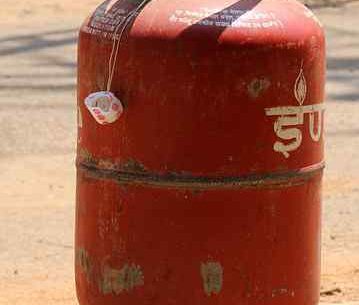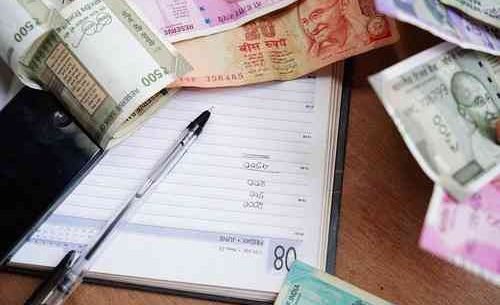The CGTMSE loan scheme for startups plays a pivotal role in fostering the growth of Micro and Small Enterprises in India.
Access to finance is a critical factor for the success of startups in India. However, many startups face challenges in obtaining traditional bank loans due to their lack of collateral or credit history.
The Credit Guarantee Fund Trust for Micro and Small Enterprises (CGTMSE) addresses this issue by providing credit guarantees to startups, making it easier for them to secure loans from financial institutions.
Established by the Government of India and the Small Industries Development Bank of India (SIDBI), aim to promote entrepreneurship and economic development. The CGTMSE scheme is a crucial support system for startups, ensuring easier access to funds and financial stability.
Table of Contents
What is CGTMSE Loan Scheme for Startups in India
The Credit Guarantee Fund Trust for Micro and Small Enterprises (CGTMSE) is a partnership between the Ministry of Micro, Small & Medium Enterprises (MSME), Government of India, and the Small Industries Development Bank of India (SIDBI).
Its main purpose is to encourage the lending of money to Micro & Small Enterprises (MSEs) by providing a credit guarantee. This helps those who may not have easy access to traditional loans, such as new entrepreneurs, underserved individuals, and those in need of financial support.
Over the last 22 years, CGTMSE has played a significant role by guaranteeing loans without the need for collateral or third-party guarantees, provided by eligible Member Lending Institutions (MLIs) to MSEs.
Recently, CGTMSE achieved a remarkable milestone by approving guarantees worth `1 lakh crore during FY 2022 – 23. This success can be attributed to various initiatives implemented during the financial year.
With its unwavering dedication, CGTMSE is working towards fulfilling the goal set by the Hon’ble Prime Minister of achieving a USD 5 trillion economy. They have become a vital part of the financial ecosystem, fostering entrepreneurship across the nation.
Objectives of CGTMS Lone Scheme
The primary objectives of the CGTMSE Loan Scheme are to:
- Enhance the availability of credit to MSMEs, including startups
- Reduce the risk of collateral-free loans for lending institutions
- Promote the growth and development of the MSME sector
- Encourage innovation and entrepreneurship among Indian youth
- Ensure financial inclusivity and support underprivileged sections of society in becoming entrepreneurs.
Benefits of CGTMSE for Startups
The CGTMSE Loan Scheme offers several benefits to startups, including:
Reduced collateral requirements: Startups can access loans without the need for collateral or third-party guarantees.
Lower interest rates: Lenders offer lower interest rates on CGTMSE-covered loans due to the reduced risk.
Increased access to finance: Startups can access loans from a wider range of financial institutions.
Improved cash flow: Startups can manage their cash flow better with access to timely and adequate funding.
Increased business opportunities: Startups can invest in new opportunities and expand their businesses with access to CGTMSE loans.
Also Read: Social Welfare Schemes in India
Credit Guarantee Under CGTMSE
Credit guarantee under CGTMSE offers guarantees to lending institutions, reducing their risk when providing loans to micro and small enterprises (MSEs), including startups.
Under the CGTMSE scheme, eligible MSEs can access collateral-free loans, as the credit guarantee covers a significant portion of the loan amount. The guarantee can be up to 75% for loans up to Rs. 50 lakhs and 85% for loans above this amount, making it easier for MSEs to secure the necessary funding for business growth and expansion.
This not only encourages lending institutions to support MSEs but also empowers entrepreneurs by providing them with greater financial security.
CGTMSE Scheme Coverage Criteria
The CGTMSE loan scheme for startups in India plays a crucial role in supporting micro and small enterprises (MSEs) by offering credit guarantees to lending institutions. To benefit from this scheme, it’s important to understand the coverage criteria.
The CGTMSE covers term loans and working capital loans, including those for machinery purchase, business expansion, and operational needs. However, it does not encompass loans for speculative activities or personal use.
The scheme accommodates a wide range of business sectors, including manufacturing and services, and is available for enterprises with a project cost of up to Rs. 2 crores.
This inclusive approach ensures that a broad spectrum of MSEs, including startups, can access the financial support they need to thrive, promoting entrepreneurship and economic growth in India.
Key Coverage Criteria:
Registration: The MSME must be registered as a company or partnership firm under the Companies Act or the Partnership Act, respectively.
MSME Status: The MSME must be classified as a micro, small, or medium enterprise as per the MSME definition.
Business Activity: The MSME must be engaged in manufacturing or services excluding agriculture, forestry, and fishing.
Credit History: The MSME must have a satisfactory credit history or a project viability assessment report from a recognized agency.
Loan Amount: The loan amount must be within the specified limits for the type of loan facility.
Collateral: The loan must be collateral-free or have minimal collateral requirements.
Project Viability: The project for which the loan is sought must be viable and have a reasonable chance of success.
Member Lending Institution (MLI): The loan must be obtained from an eligible MLI approved by CGTMSE.
Guarantee Coverage: The guarantee coverage is typically up to 75% of the loan amount, depending on the type of loan facility and the borrower’s profile.
Lending Institutions Provide Loan under CGTSME
Public Sector Banks: Major public sector banks like State Bank of India, Bank of Baroda, and Punjab National Bank.
Private Sector Banks: Private sector banks like HDFC Bank, ICICI Bank, and Axis Bank.
Regional Rural Banks (RRBs): RRBs provide the credit needed for MSMEs in rural and semi-urban areas.
Small Finance Banks (SFBs): SFBs focus on providing financial services to underserved and unbanked segments.
Non-Banking Financial Companies (NBFCs): NBFCs offer flexible financing options, including CGTMSE-covered loans, to MSMEs.
Microfinance Institutions (MFIs): MFIs provide microloans to microenterprises and individuals in low-income communities.
Eligibility for CGTMSE Scheme
To be eligible for the CGTMSE Loan Scheme, startups must meet the following criteria:
- Registration: The startup must be registered as a company or partnership firm under the Companies Act or the Partnership Act, respectively.
- MSME Status: The startup must be classified as a micro, small, or medium enterprise as per the MSME definition.
- Business Activity: The startup must be engaged in manufacturing or services excluding agriculture, forestry, and fishing.
- Credit History: The startup must have a satisfactory credit history or a project viability assessment report from a recognized agency.
- The project cost should not exceed Rs. 2 crores to be eligible for collateral-free loans.
CGTMSE Loan Interest Rate
The interest rate on CGTMSE-covered loans is determined by the lending institution based on the borrower’s creditworthiness and other factors.
However, the interest rates are generally lower than comparable unsecured loans due to the credit guarantee provided by CGTMSE.
The exact interest rate offered will vary depending on the lending institution, the loan amount, the borrower’s credit profile, and other factors.
Startups and small businesses can benefit from lower interest rates, encouraging them to take advantage of the scheme for their financial needs.
Documents required for CGTMS Loan
The specific documents required for a CGTMSE loan application vary depending on the lending institution. However, the general documents required include:
- Duly filled CGTMSE loan application form along with the requisite passport-sized photographs.
- Business Incorporation or Company Registration Certificate.
- Business Project Report.
- CGTMSE Loan Coverage Letter.
- Loan approval copy provided by the bank.
- Any other document that is required by the bank.
In addition to these general requirements, some lenders may also require additional documents, such as:
Financial statements: This includes balance sheets, income statements, and cash flow statements for the past two or three years.
Tax returns: This includes income tax returns for the past two or three years.
GST registration certificate: If the business is registered for GST, a copy of the GST registration certificate is required.
Proof of address: This could be a copy of the borrower’s passport, driving license, voter ID card, or Aadhar card.
Proof of residence: This could be a copy of the borrower’s electricity bill, telephone bill, or bank statement.
It is always best to check with the specific lending institution to determine the exact documents required for a CGTMSE loan application.
Steps to Avail Loan Under CGTMS Scheme
To avail a loan under the CGTMSE, startups and MSMEs can follow these steps:
Identify a CGTMSE-approved lending institution: A list of CGTMSE-approved lending institutions can be found on the CGTMSE website.
Submit a loan application along with the required documents: The required documents will vary depending on the lending institution, but typically include a duly filled application form, business incorporation or company registration certificate, business project report, CGTMSE loan coverage letter, and loan approval copy provided by the bank.
Credit assessment by the lending institution: The lending institution will assess the borrower’s creditworthiness based on various factors, such as financial statements, tax returns, GST registration certificate, and proof of address and residence.
Receive a loan offer if the application is approved: If the loan application is approved, the lending institution will issue a loan offer. This will include the loan amount, interest rate, repayment terms, and other conditions.
Sign the loan agreement and complete the documentation: Once the borrower accepts the loan offer, they will need to sign the loan agreement and complete all the required documentation.
Receive the loan proceeds: Once the loan agreement is signed and the documentation is completed, the lending institution will disburse the loan proceeds to the borrower’s account.
It is important to note that the CGTMSE Scheme does not provide loans directly to borrowers. Instead, it provides a credit guarantee to lending institutions, which reduces their risk and encourages them to lend to MSMEs. Therefore, borrowers must apply for a loan from a CGTMSE-approved lending institution.
Conclusion
The CGTMSE Loan Scheme for startups in India is a valuable resource for startups in India. By providing credit guarantees, the CGTMSE makes it easier for startups to secure loans and access the capital they need to grow and succeed.
By providing collateral-free loans, competitive interest rates, and credit guarantees, it has empowered countless startups and micro-enterprises, creating a robust foundation for sustained growth.
The scheme enabled startups to invest in new opportunities, expand their businesses, and contribute to the growth of the Indian economy.


